FACE Value
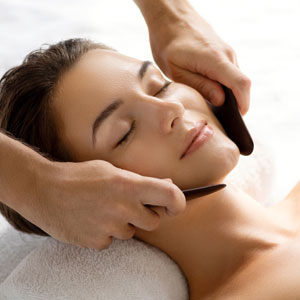
Mention cosmetic acupuncture these days and the image of celebrities posting pictures on social media with their faces liberally peppered with tiny needles may spring to mind. However, cosmetic acupuncture has a much deeper and richer history. Rather than the fad of the modern celebrity or the latest beauty craze, its roots can be found in ancient Chinese acupuncture texts and traditional Chinese medical (TCM) practices. While the ancient Chinese practices are no longer considered essential to the effect of facial rejuvenation acupuncture (as it is also known) it is nevertheless interesting to look in more detail at its history.
Traditional Chinese acupuncture has developed within TCM and has historically embraced its underlying concepts of qi (chee) flow, yin/yang and meridian theory. Ancient theories suggest that providing there is a harmonious balance between yin and yang, and there is an uninterrupted flow of qi throughout the meridians, all will essentially be well. When there is an alteration or interruption of the qi flow, acupuncture can be employed to restore the status quo (Maciocia, 1994). By needling specific points along the meridians, various disharmonies can be addressed and qi flow can be normalised. The points selected are dependent on the region, nature and severity of the presenting condition and symptoms.
The vast majority of acupuncture points are considered to be situated over or very close to significant neural structures (Chan, 1984). A large number of acupuncture points are considered to lie very close to major blood vessels which are also surrounded by small nerve bundles (Chan 1984). Essentially all acupuncture points are believed to be capable of treating pain or localised healing but from a TCM perspective they are also considered to have other effects related to systemic function. It is the knowledge and manipulation of those effects which is utilised by traditional acupuncture practitioners when addressing systemic conditions.
Part Time
We know that most of our students have full or part-time jobs, which is why all of our courses are part-time and designed to fit around both personal and working lives.
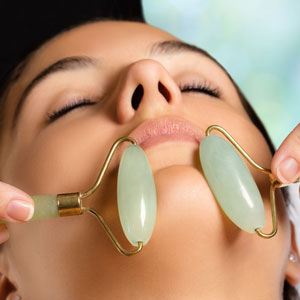
Easy to Reach
Situated in the Plassey Wrexham, North Wales with ample parking we are just over an hour’s drive from Manchester Airport, 4 miles from Wrexham General station - students attend our courses from all over the UK and Europe, with everyone finding it easy to reach us.
Our courses are fully accredited
This ensures that our courses meet the top standards, and allows our graduates to apply for professional registration with the Federation of Holistic Therapists, the Acupuncture Association of Chartered Physiotherapists (AACP) for advanced Membership status and the Acupuncture Society and the British Acupuncture Federation.
Course Content
TCM theory and cosmetic acupuncture
TCM theory suggests that key yin organs and their associated channels have an integral part to play in facial rejuvenation. Below is a brief overview of the yin organs and their involvement in facial rejuvenation.
Yin organs
- Heart - rules blood, blood vessels and spirit;
- stress, anger and frustration all cause wrinkles;
- weak heart function leads to swelling, puffiness and wrinkles;
- a disturbed heart causes insomnia, dark eye circles and puffy eyes.
- Lungs - inhaled air combined with food is spread through the body enabling the lungs to rule the qi of the entire body;
- skin and face relate to lung qi;
- the lungs are paired with the large intestine (digestion);
- weakness of the lungs leads to dryness, wrinkles and a withered complexion.
- Liver - related to blood;
- major role in qi flow of all organ systems;
- poor liver function disrupts qi and blood flow throughout the body (including face);
- a slowing of liver qi flow leads to wrinkles, dark spots and a dusty complexion.
- Spleen - related to facial beauty and digestive system;
- digestion is vital for overall health and beauty;
- qi deficiency in the spleen: skin lacks nourishment, loss of tone, sagging, looseness, leading to puffiness of the face, eye bags and dark spots.
- Kidneys - regulate fluid balance, extracting excess body fluid along with the bladder;
- deficient kidney yin leads to dark eye circles and age spots;
- low kidney yang leads to puffy eyes;
- insufficient kidney essence leads to accelerated age, affecting skin tautness, wrinkles and thin hair.
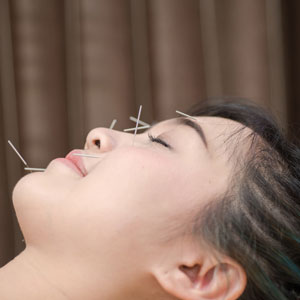
Physiological mechanisms of cosmetic acupuncture
During facial acupuncture the insertion of small, very fine needles into the skin creates microtrauma to the localised tissue, which triggers an inflammatory response. Inflammation is the body’s generic response to any form of trauma. The purpose of inflammation is to eliminate the initial cause of cell injury and to remove the damaged tissue and dead cell debris. It also exists to initiate repair of the damaged tissues and promote the healing process. Acute or new inflammation presents with five classical signs - pain, heat, redness, swelling and loss of function.
Innate immune responses, such as those from acupuncture induced trauma, do not adapt to the same repeated exposure. This means the tissue does not become acclimatised or immune to the intervention, as can happen with pharmacological interventions. Inflammation from acupuncture needling creates an observable alteration in local tissues, which are generated by changes in vascular permeability and dilation. These changes may also result in visible erythema and oedema in the local area. These are termed ‘weal’ and ‘flare’ (redness and mild localised swelling) responses and are often seen in the skin surrounding the area of insertion of an acupuncture needle.
The inflammatory response brings with it increased microcirculation, leading to the stimulation of localised healing. The microtrauma stimulation of acupuncture has been shown to facilitate muscle regeneration which can be beneficial in enhancing facial rejuvenation (Ameis et al, 2011). Facial acupuncture has also demonstrated an improvement in skin elasticity, which is believed to be a result of localised collagen stimulation and production (Yun et al, 2013). Further effects of facial acupuncture also include the increase of oil and water content of skin (Donoyama et al, 2012). As the skin’s oil and water content and elasticity reduces with age, the natural improvement of these aspects can be seen as a route to improving the skin and complexion, without drastic changes to the overall appearance of a client.
As acupuncture also stimulates the autonomic nervous system, it influences both its sympathetic and parasympathetic components (Wong and Shen, 2010). The sympathetic portion of the autonomic system represents the ‘fight or flight’ aspect, while the parasympathetic corresponds to ‘rest and digest.’ Acupuncture at key points can have a fundamental influence on the underpinning systemic functions that support skin quality. Healthy digestive, respiratory and cardiovascular systems underpin the maintenance of healthy skin by maintaining normal metabolic function. Acupuncturing key points on the body that are distal to the face can therefore influence and support the positive effects of facial acupuncture.
Both the local and systemic effects of acupuncture are utilised within the practice of facial acupuncture. The combination of both aspects of the local response to needling trauma and the systemic autonomic effects can improve the appearance of the skin.
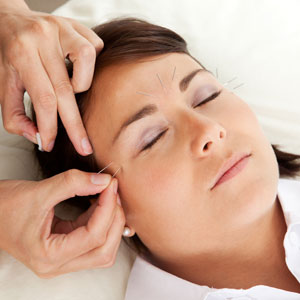
Needling technique
The practice of acupuncture is a technical skill that like all others is developed over time with repeated practise. Due to the invasive nature of acupuncture however, every insertion of a needle requires exact technique to avoid harm and discomfort to the client. In compliance with strict health and safety guidelines only sterile, single use needles are used. There are several different types of needles utilised for different techniques and some of these may alter between practitioners due to personal preference. There are however some guidelines that exist to determine which needles are employed for which point.
As different structures are needled all over the body, the depth of needle penetration will vary with the target tissue being needled. This requires several different lengths of needle to be utilised in each treatment. The most common sizes include 7mm and 13mm for the face, 25mm for the hands and feet and 40mm for the limbs. These needles tend to range in thickness from 0.16mm to 0.25mm in diameter. The length of needle is important as once it has been inserted a proportion of the shaft of the needle must remain external to the body for health and safety purposes.
A variety of needles may be used whilst needling the face and the practitioner will take into account the technique being performed and the target tissue being needled. The technique may also vary depending on what results the practitioner is aiming to achieve. For example, the lines on the forehead may be needled with 7mm needles whilst the jawline may use 30mm needles (again bearing in mind that the whole length of the needle is not inserted below the skin). In any given treatment, up to 100 needles may be utilised. With careful reasoned placement, this is not excessive and can be achieved in a relatively short space of time with the correct training and experience, as it is often delivered in a set protocol.
Like any other form of acupuncture, prior to needling a client, suitability for treatment would be assessed and informed consent obtained which would include a full explanation of the points to be needled and possible sensations to be experienced. The client would usually be positioned in supine, but reclined sitting could also be used if necessary. When the needle is inserted through the skin and into the underlying soft tissues (muscle and/or connective tissue) nerve fibres are stimulated. These fibres include A beta (Aβ), A delta (Ad) and C fibres. It is the stimulation of these fibres that gives the acupuncture recipient the sensations of tingling (Aβ) or dull aching (Ad and C) often referred to as deqi (deechee) (Stux and Hammerschlag, 2001). These sensations are typically reported during acupuncture treatments and are not unpleasant.
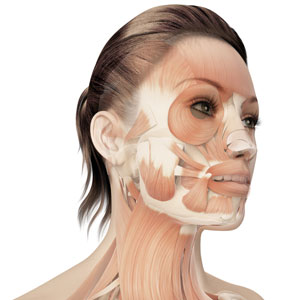
Facial anatomy
Safe effective needling of the face requires a good knowledge and understanding of the underlying anatomical structures. This includes muscles, nerves, and blood vessels. Only by understanding the structure and location of the local anatomy can facial acupuncture be safely and effectively carried out. A failure to appreciate what lies beneath the skin can result in bruising, pain, and a limited effectiveness of the treatment. The direction of the needle insertion and the techniques employed are relative to the muscles needled and the effect the practitioner is attempting to achieve.
In addition to needles in the face, the practitioner may also needle the arms, legs, and the ears. Ear acupuncture or auricular therapy is often employed to help individuals deal with addictions or support detoxification programmes. Detoxification protocols within auricular therapy often consists of the following points being stimulated: lung, shen men, autonomic point, liver and kidney (Landgren, 2008). For use in facial rejuvenation acupuncture the standard protocol is sometimes modified to include the heart and spleen points as well. The intention of the treatment is to detoxify the client and reduce stress, anxiety, and excessive sensitivity.
By combining all these aspects within cosmetic acupuncture the practitioner can create a total package of treatment that will support improvement to the client’s skin condition and appearance. Each typical treatment session may last up to an hour and while improvements can be seen after one session, for best results treatments would be repeated over a course of six to twelve sessions, over a period of three to twelve weeks. Once an initial course of treatment has been undertaken many clients may benefit from single repeat sessions every few months to maintain the benefits of treatment.
If you have any questions, or would like to apply for a place on our diploma, please contact us



